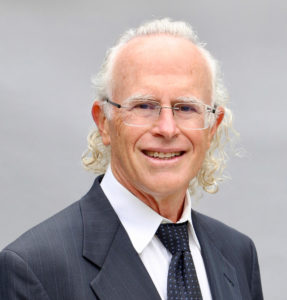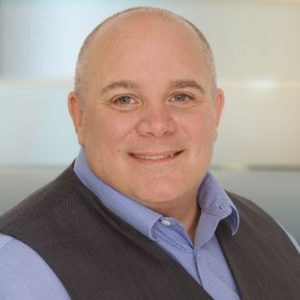Is a wound-free facility possible?
MDS 3.0 has brought with it increased accountability for nursing homes (NHs) and a change in quality measures. The possibility of decreased reimbursement for facility-acquired pressure wounds is real. According to Wake,1 “the current costs of providing care for one pressure ulcer can range from $3,500 to over $60,000, depending on the stage of the ulcer.”
Pressure ulcer rates range from 0.4 percent to 38 percent in acute care to 2.2 percent to 23.9 percent in long-term care.2 Advancing Excellence in America’s Nursing Homes (AE) Quality Campaign has already demonstrated improvement in clinical outcomes through the QAPI measurements in Skin Management. AE offers free resources that are structured around good organizational practices and person-centered care.
Managers and administrators need to ask, “Who needs to implement changes in care practices?” When it comes to skin, CNAs are most frequently in a place to observe the residents’ skin.3 They truly are the people who can maintain or improve skin integrity, under the guidance of RNs and LPNs.
Because nurses are not usually trained in geriatric care and the time and funding for professional education are limited, they may not be current in evidence-based procedures. It takes a culture of inquiry and sharing of knowledge as well as collaboration to improve this aspect of care. Because of this, education and employee retention are vital to meet quality skin goals. AE is one source for the tools to provide quality skin programs.
Today’s nursing homes have a diverse population ranging from recently active to long-term immobile residents. Providing quality skin care for such a population takes excellent nursing knowledge, assessment, planning and interventions.
SKIN AS IT AGES
As we age, our skin becomes dry, rough and thinner, giving it a paper-like appearance. Thinning of the epidermis makes the older skin more vulnerable to trauma and injury. Collagen decreases one percent every year in adulthood after age 20. Vascularity decreases, and the immune response of the dermis declines with age making it high risk for infection. Sweat glands atrophy and apocrine glands produce less oil, putting the older adult at risk for overheating and dry skin. All of these factors make the older adult more vulnerable to skin breakdown slower wound healing. When you add comorbidities, it becomes increasingly difficult to heal skin in the older adult.4
RISK ASSESSMENT BASICS
Determining risk factors beyond age will assist staff in focusing on residents with the most needs. Examples of risk factors include immobility and decreased functional ability; co-morbid conditions such as end-stage renal disease, thyroid disease or diabetes; drugs such as steroids; impaired diffuse or localized blood flow; resident refusal of care and treatment; cognitive impairment; exposure of skin to urinary and fecal incontinence; under nutrition and hydration deficits; and a previously healed ulcer. The Braden Scale for Predicting Pressure Sore Risk is the most widely used tool to determine risk.
WOUND ASSESSMENT ON ADMISSION
Quality outcomes and financial stability are closely linked to the initial assessment upon entry into your facility. An accurate and thorough skin assessment is necessary for an effective prevention and skin treatment program.
To determine need in your facility, examine the admission assessment process. Are there any staffing or work components that make this difficult to accomplish in a timely, thorough manner? Good leadership, education and retention should be high on your priority list for successful quality initiatives. All nurses need to measure consistently measure and accurately document to create a plan of care that includes interventions that maintain or treat the resident’s skin issues.
Wound assessment criterion has changed under MDS 3.0 and staging of pressure ulcers differs from the National Pressure Ulcer Advisory Panel (NPUAP). Make sure that everyone at the facility is using the correct measures for MDS. To evaluate their ability to measure and stage a pressure ulcer, consider having three of your best nurses assess a wound without seeing each others’ results. Compare their results and work with your nursing leaders and educators to address concerns.
Consider joining AE’s Quality Campaign to begin setting goals for your facility. Your nurse educator will have access to evidence-based clinical resources that are updated routinely. Other resources include the National Gerontological Nursing Association (NGNA), the Hartford Institute for Geriatric Nursing Partnership, Nurses Improving Care for Health System Elders (NICHE) and HRSA Medical Education Initiative. In providing nurses with the tools to keep up with the challenge of being real coordinators of care, nurses will become able to teach and supervise the CNAs who perform the tasks of wound prevention.
When a resident is admitted to the facility, the admitting nurse should review the records from the last institution or level of care. The whole body must be observed. Good lighting is needed. It is best to have two nurses available to perform a skin assessment on a new resident. This will assure comfort for the resident if he/she needs to be held in a side-lying or other awkward position. There is no shortcut in the assessment, but with one nurse to document and one to perform the assessment, the process will go more swiftly. This improves the overall quality of and resident’s satisfaction with the admission experience.
Your role as a leader is to provide these resources as well as encourage your staff to communicate, mentor and grow with one another as a team. It takes persistent leadership to build a team that is eager to learn and understands that quality in their nursing practice equates to quality of care for their residents.
WOUND CARE
The goal of treatment is to create skin conditions which are conducive to wound healing. The immediate goal is to relieve pain. Even stage I and II wounds are very painful. Appropriate pain management as well as the selection of the appropriate dressing, gentle removal of dressings and rest periods during treatment will minimize the discomfort of the dressing changes.
Training your staff on wound care will pay dividends in both promotion of healing and patient and family satisfaction.5 Before a dressing can be applied to a wound, the surface contaminants, bacteria, slough and foreign bodies must be removed. Once cleaning has been completed, the dressing can be applied. The primary goal of wound dressing is to keep the wound bed moist and the surrounding skin dry. Managing the microenvironment of the wound bed is critical to promote healing.
Your facility’s choice of wound care products will depend on physician treatment preference. Discussing the comparative cost versus the characteristics of the product chosen can help with budget control, while giving the residents the best possible option for the type and stage of wound.
The choice of product used for the wound depends on many factors, including wound location, depth, care environment, activity level of the patient, nutritional status and skill of the caregiver. Knowing the general categories of wound care products will be helpful in determining which products your facility will choose to use. The following table while not all-inclusive will present the general categories of wound care products and their general uses (see table).
 Very few wounds will be treated with the same products throughout the healing process. An organized decision-making process will assist in choosing the appropriate product for each particular wound. Information gathered by caregivers provides information on the progress of the healing process. Well-trained staff members who are consistently involved with the same residents and who regularly monitor their are invaluable in monitoring changes in both the wound itself and each residents’ overall health and well-being.
Very few wounds will be treated with the same products throughout the healing process. An organized decision-making process will assist in choosing the appropriate product for each particular wound. Information gathered by caregivers provides information on the progress of the healing process. Well-trained staff members who are consistently involved with the same residents and who regularly monitor their are invaluable in monitoring changes in both the wound itself and each residents’ overall health and well-being.
SUMMARY
Skin is a quality-of-life issue for older persons in nursing facilities. If your nursing staff have good leadership skills and good care-planning practices, good clinical outcomes will follow and the staff, residents and families will be happy. Surround yourself with staff who are eager to learn and create a culture of excellence, leading by example. Use the resources provided by professional organizations. You will see improvement in your facility which will equate to improvement in the lives of older adults.
Pam Seale, MSN, RN, GCNS-BC, is a board-certified CNS in Gerontology, who works with students at the IUPUI (Indiana University—Purdue University–Indianapolis) campus program of People of Praise.
Susan Ball, PhD, RN, GNP-BC, CLNC, is a board-certified gerontological nurse practitioner. She teaches in the Graduate Psychiatric Mental Health Nurse Practitioner program at the University of Arkansas for Medical Sciences.
Linda Denison Bub, MSN, RN, GCNS-BC, is the director of education and program development for NICHE (Nurses Improving Care for Healthsystem Elders) NYU.
REFERENCES
- Wake WT. Pressure ulcers: What clinicians need to know. The Permanente Journal 2010;14(2):56-60. Available at: www.ncbi.nlm.nih.gov/pmc/articles/PMC2912087/.
- Pressure ulcer prevention. Primaris, 2011.Available at: www.primaris.org/pressure_ulcers.
- Sparks M. (2011). Clinically Speaking. Incontinence and associated skin care. Long-Term Living 2011;60(9):22-5.
- Shippee-Rice RV, Fetzer SJ, Long JV. Gerioperative Nursing Care: Principles and Practices of Surgical Care for the Older Adult PP. 319-340. New York, NY: Springer, 2012.
- Kwong EW, Lau AT, Lee RL, Kwan RY. A pressure ulcer prevention programme specially designed for nursing homes: Does it work? Journal of Clinical Nursing 2011; Sept 20:2777-86.
- Pressure ulcer prevention and treatment protocol. Health care protocol. Institute for Clinical Systems Improvement, 2012. Available at: www.guideline.gov/content.aspx?id=36059.
I Advance Senior Care is the industry-leading source for practical, in-depth, business-building, and resident care information for owners, executives, administrators, and directors of nursing at assisted living communities, skilled nursing facilities, post-acute facilities, and continuing care retirement communities. The I Advance Senior Care editorial team and industry experts provide market analysis, strategic direction, policy commentary, clinical best-practices, business management, and technology breakthroughs.
I Advance Senior Care is part of the Institute for the Advancement of Senior Care and published by Plain-English Health Care.
Related Articles
Topics: Articles , Clinical











